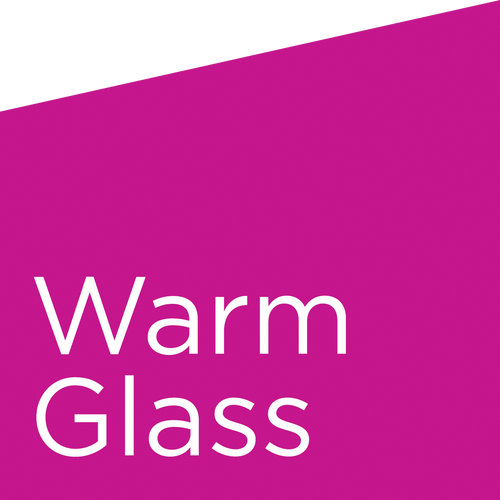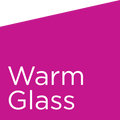
Glass Basics
What is fusing?
Fusing is the technique of joining two or more pieces of glass in a kiln by heating them to very high temperatures so they melt and stick together. In order to successfully fuse glass together, the glass must be compatible. All the glass we sell is CoE90, Bullseye compatible so you don't have to worry about this when buying or using our glass.
What is slumping?
Slumping is a technique that uses gravity to shape glass into the form of a pre-made mould. The glass and mould are placed in the kiln, and when the glass is heated it becomes soft and slowly drops into the mould under its own weight. This is a popular method for creating bowls and platters, but there are many other possibilities of pieces to be made using this technique.
What is tack-fusing?
Tack-fusing is a process in which two or more pieces of glass are fired in a kiln at quite a low temperature, so that they just stick together but retain most of their original features. You can use this technique to retain or create texture in your pieces. See our Kiln Schedules page for a typical tack fusing schedule suitable for Bullseye Glass.
What is the specific gravity of Bullseye glass?
The specific gravity of Bullseye glass is 2.5. This means that every cubic centimetre of Bullseye Glass weighs 2.5g. This is useful when calculating the weight of glass needed to fill a casting mould. Fill the mould with water, weigh the water in grams, then multiply that figure by 2.5 to calculate the weight of glass required.
How big are individual frit granules?
Bullseye frit comes in 5 different sizes:
Powder which has grain sizes 0.2mm and finer;
Fine which has grain sizes from 0.2mm to 1.2mm;
Medium which has grain sizes from 1.2mm to 2.7mm;
Coarse which has grain sizes from 2.7 - 5.2mm;
Extra Large (available in clear only) which has grain sizes 5.2mm - 30mm.
Is Bullseye glass food safe?
Some Bullseye glass colours contain lead and cadmium, and Bullseye recommend capping these colours with clear glass if they are to be used with food. View the list of these glasses here.
What does it mean when glass is described as a 'striker'?
Some glass will appear very pale or even colourless in its unfired state, but when fired it will mature, or 'strike' to its target colour. Striking colours can be affected by temperature, atmosphere and the heat history of the piece, so we would recommend testing the glass before firing to make sure that the optimum target colour is reached. All striker glass styles we sell are marked as such in the product description.
What is 'Curious' glass?
Bullseye have very specific requirements that their hand-made glass must satisfy in order to be deemed of a good enough quality to be sold as standard stock. Because of the hand-making process, inevitably some glass will not reach these requirements. This glass is classed as 'Curious' and is sold at a discounted price. Curious glass is fusible and all sheets are unique, which can make for very interesting pieces.
Can Bullseye Glass be fused and cast with other CoE90 glass?
During manufacture, Bullseye glass is only tested against Bullseye glass so it cannot be guaranteed to be compatible with other CoE90 glass. The only way of ensuring compatibility is to conduct your own tests. All the glass we sell is Bullseye Glass compatible.
Why do I need to clean glass before firing it, and what should I use to clean it?
Glass needs to be cleaned before firing, as this removes anything that may contaminate the surface of your fired piece, such as cutting fluid, oils, dust, sticker residue or fingerprints to name just a few. These contaminants may be visible on the finished piece even if they are not visible before firing, and could cause devitrification, which is the growth of crystals on the surface of the glass. Some people ask whether fluids such as washing up liquid or hand soap, which contain detergents, are appropriate to clean glass with. These cleaning fluids are not suitable for glass cleaning, as they can cause devitrification. Our Professional Glass Cleaner is perfect for this job.
How do I know whether to use 2mm or 3mm glass?
When it is heated in a kiln to full fuse temperatures, glass naturally wants to assume a thickness of 6mm unless it is constrained by dams or a mould. This means that either 2 layers of 3mm glass, or 3 layers of 2mm glass can be stacked and the glass will not distort in the kiln. For more information, see 6mm Rule.
Will all Bullseye glass behave the same in my kiln?
Not all Bullseye glass behaves identically when heated. As different glasses have different viscosities there may be some slight variation depending on what glass you are using.
How tough and heat resistant is Bullseye Glass?
Bullseye glass is as strong as most other glasses but is not toughened or heat resistant like Pyrex. Assuming that the glass has been annealed properly Bullseye glass can be used for placemats, plates, bowls and coasters without issue.
What can I expect from Bullseye rods?
Bullseye rods are given two different grades, based on their characteristics - T-grade rods, which are formulated for flameworking and are not recommended for kilnforming, and F-grade rods, which can be used for both flameworking and kilnforming. On the whole, F-grade rods behave very similarly to sheet glass, with a few differences which are mainly due to the fact that rods are thicker than the 3mm of sheet glass. View this tipsheet for more information on Bullseye rods.
My glass sheet has a wavy edge, is this normal?


